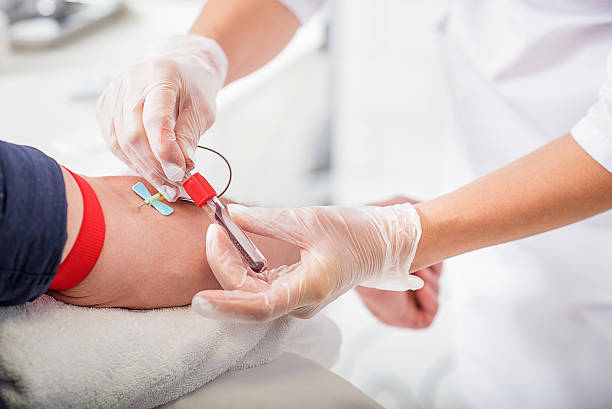Understanding Stem Cell Donation: A Comprehensive Overview
Stem cell donation is a powerful and potentially life-saving process that plays a crucial role in modern medicine. By offering a chance for people with serious diseases and conditions, stem cell donation provides hope and a pathway to recovery. This detailed guide delves into what stem cell donation involves, its significance, and how it impacts both donors and recipients.
What Are Stem Cells?
Stem cells are unique cells with the ability to develop into different types of cells in the body. They serve as a repair system, replenishing damaged tissues and organs. There are two main types of stem cells: embryonic stem cells and adult stem cells. Embryonic stem cells are derived from early-stage embryos and have the potential to become any cell type in the body. Adult stem cells, found in various tissues such as bone marrow and blood, are more specialized but still have the capacity to transform into different cell types within their tissue of origin.
The Role of Stem Cell Donation
Stem cell donation is essential for treating a range of medical conditions, including various forms of cancer like leukemia and lymphoma, as well as genetic disorders such as sickle cell anemia and thalassemia. When patients undergo treatments like chemotherapy or radiation, their healthy blood-forming cells can be destroyed, leaving stem cell transplants as a vital option for restoring their bone marrow and blood cells.
The Stem Cell Donation Process
The process of donating stem cells typically involves several steps. Initially, potential donors are evaluated to ensure they are healthy and suitable for donation. This involves a thorough medical history review and, often, a physical examination. If a donor is found to be a good match for a patient, they will proceed to the donation stage, which can be done through two primary methods: peripheral blood stem cell (PBSC) donation and bone marrow donation.
Peripheral blood stem cell donation involves a process similar to donating blood. Donors receive a medication called filgrastim for several days before the donation, which increases the number of stem cells in the bloodstream. Blood is then drawn through a needle in one arm, processed to collect the stem cells, and returned through a needle in the other arm.
Bone marrow donation is a surgical procedure performed under anesthesia. The donor's bone marrow is extracted from the hip bone using a needle and syringe. Although it may sound daunting, most donors experience only mild discomfort and can resume normal activities relatively quickly.
Benefits and Risks of Stem Cell Donation
Stem cell donation offers numerous benefits, both to the recipients and the donors themselves. For recipients, stem cell transplants can be life-saving, offering a chance to overcome serious illnesses and return to a healthy, fulfilling life. For donors, the act of donating stem cells can be profoundly rewarding, knowing that their contribution is making a significant difference in someone’s life.
However, like any medical procedure, stem cell donation carries some risks. For peripheral blood stem cell donation, side effects from the filgrastim medication may include bone pain, fatigue, and flu-like symptoms. For bone marrow donation, potential risks include temporary pain at the extraction site, possible infection, and rare complications from the anesthesia. Nonetheless, these risks are generally minimal, and the overall safety profile of stem cell donation is quite high.
The Impact of Stem Cell Donation
The impact of stem cell donation extends far beyond the immediate medical benefits. For many patients, a successful stem cell transplant can lead to a complete recovery and a return to a normal life. The emotional and psychological benefits are also significant, as patients and their families experience relief and hope for a brighter future.
For donors, the act of giving is often accompanied by a profound sense of fulfillment and accomplishment. Knowing that they have played a crucial role in saving a life can be incredibly gratifying. Many donors also form connections with the recipients, sharing their experiences and witnessing the positive outcomes of their donation.
The Importance of Donor Registries
Donor registries play a vital role in the stem cell donation process. These registries, which are databases of individuals who have agreed to donate stem cells, help match potential donors with patients in need. The more diverse and comprehensive these registries are, the better the chances of finding a suitable match for patients, particularly those from minority or underrepresented groups.
Joining a donor registry is a straightforward process, typically involving a simple blood test or cheek swab. Once registered, individuals may be contacted if they are a match for a patient in need. The commitment to donate, if matched, is a significant contribution to the ongoing effort to combat serious diseases and improve patient outcomes.
Advancements in Stem Cell Research
Ongoing research in stem cell science continues to expand our understanding of these remarkable cells and their potential applications. Advances in technology and methodology are enhancing the effectiveness of stem cell therapies and opening new avenues for treatment. Researchers are exploring ways to improve stem cell collection, increase the success rates of transplants, and develop new treatments for conditions that are currently difficult to address.
Additionally, there is growing interest in the use of stem cells for regenerative medicine, which aims to repair or replace damaged tissues and organs. This field holds promise for treating a wide range of conditions, from degenerative diseases to traumatic injuries, and could revolutionize the way we approach medical care in the future.
How to Get Involved
For those interested in getting involved with stem cell donation, there are several ways to contribute. Joining a donor registry is a critical first step. Many organizations, such as the Be The Match registry, offer opportunities to register and learn more about the donation process. Additionally, raising awareness about stem cell donation and supporting related charities and research initiatives can further contribute to the cause.
Volunteering at events, participating in fundraising efforts, and educating others about the importance of stem cell donation are all valuable ways to support the mission of improving patient outcomes and advancing medical science. Every effort, big or small, helps to make a difference in the lives of those affected by serious diseases.
Conclusion
Stem cell donation is a remarkable and life-affirming process that offers hope and healing to patients around the world. Through the generosity of donors and the dedication of researchers and medical professionals, stem cell therapies continue to transform lives and push the boundaries of medical science. By understanding the process, benefits, and impact of stem cell donation, individuals can make informed decisions about how they might contribute to this vital field. Whether through direct donation or support of related initiatives, everyone has a role to play in advancing this crucial aspect of modern medicine.




